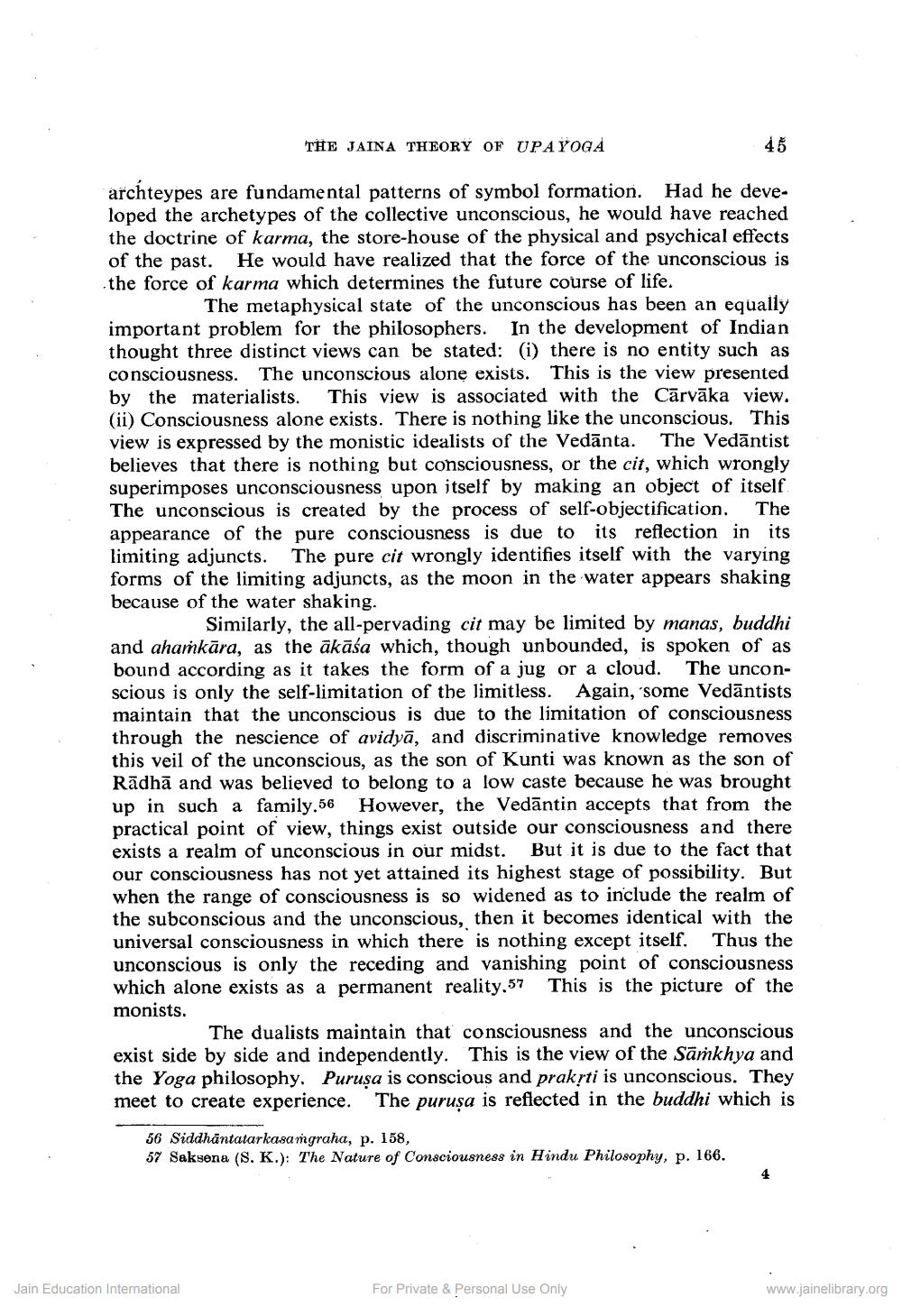________________
THE JAINA THEORY OF UPAYOGA
45
archteypes are fundamental patterns of symbol formation. Had he developed the archetypes of the collective unconscious, he would have reached the doctrine of karma, the store-house of the physical and psychical effects of the past. He would have realized that the force of the unconscious is the force of karma which determines the future course of life.
The metaphysical state of the unconscious has been an equally important problem for the philosophers. In the development of Indian thought three distinct views can be stated: (i) there is no entity such as consciousness. The unconscious alone exists. This is the view presented by the materialists. This view is associated with the Cārvāka view. (ii) Consciousness alone exists. There is nothing like the unconscious. This view is expressed by the monistic idealists of the Vedānta. The Vedāntist believes that there is nothing but consciousness, or the cit, which wrongly superimposes unconsciousness upon itself by making an object of itself The unconscious is created by the process of self-objectification. The appearance of the pure consciousness is due to its reflection in its limiting adjuncts. The pure cit wrongly identifies itself with the varying forms of the limiting adjuncts, as the moon in the water appears shaking because of the water shaking.
Similarly, the all-pervading cit may be limited by manas, buddhi and ahamkāra, as the ākāśa which, though unbounded, is spoken of as bound according as it takes the form of a jug or a cloud. The unconscious is only the self-limitation of the limitless. Again, 'some Vedāntists maintain that the unconscious is due to the limitation of consciousness through the nescience of avidyā, and discriminative knowledge removes this veil of the unconscious, as the son of Kunti was known as the son of Rādhā and was believed to belong to a low caste because he was brought up in such a family.56 However, the Vedāntin accepts that from the practical point of view, things exist outside our consciousness and there exists a realm of unconscious in our midst. But it is due to the fact that our consciousness has not yet attained its highest stage of possibility. But when the range of consciousness is so widened as to include the realm of the subconscious and the unconscious, then it becomes identical with the universal consciousness in which there is nothing except itself. Thus the unconscious is only the receding and vanishing point of consciousness which alone exists as a permanent reality.57 This is the picture of the monists.
The dualists maintain that consciousness and the unconscious exist side by side and independently. This is the view of the Sārkhya and the Yoga philosophy, Puruşa is conscious and prakrti is unconscious. They meet to create experience. The purusa is reflected in the buddhi which is
56 Siddhantatarkasamgraha, p. 158, 57 Saksona (S. K.): The Nature of Consciousness in Hindu Philosophy, p. 166.
Jain Education International
For Private & Personal Use Only
www.jainelibrary.org




